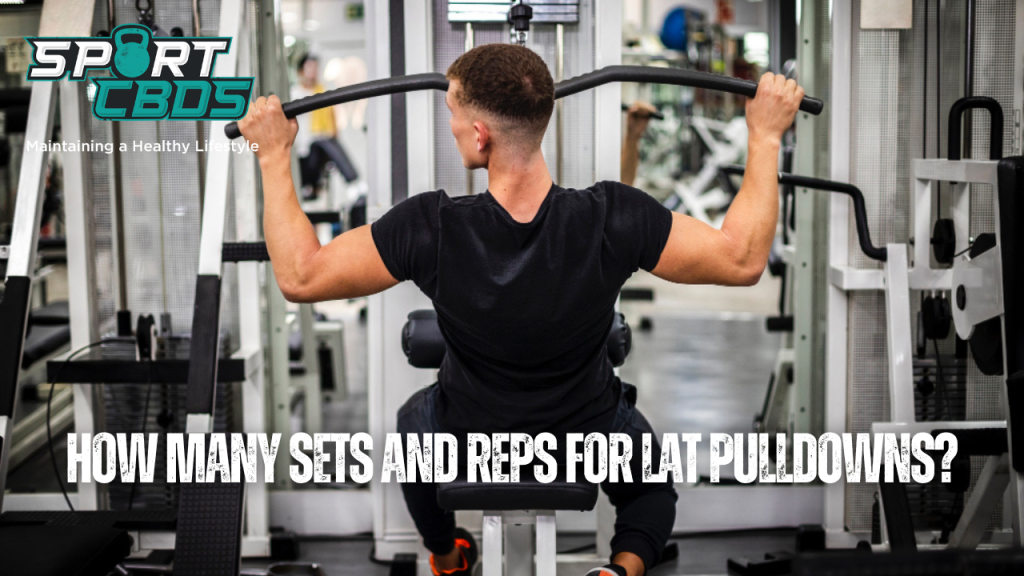
Is it Better to do Bicep Curls Against a Wall? Myth or Magic for Muscle Growth?
Bicep curls are a staple in many fitness routines, known for their ability to build and tone the biceps.
However, the question often arises: Is it better to do bicep curls against a wall? This article aims to delve into this topic, providing insights based on scientific principles and expert opinions.
The importance of proper form in bicep curls cannot be overstated, as it not only maximizes muscle engagement but also minimizes the risk of injury.
Is it Better to do Bicep Curls Against a Wall?
Bicep curls against a wall can be an effective method to enhance muscle isolation and promote better form during the exercise. The wall provides stability, preventing unnecessary body movements and momentum use, which often occurs in traditional standing or seated bicep curls. This increased control can lead to more effective engagement of the biceps, potentially leading to better muscle growth. However, this technique may limit the range of motion and cause discomfort for some individuals. It’s also important to avoid over-reliance on the wall for support. In conclusion, while it may not be better to do all bicep curls against a wall, incorporating this technique into your routine can provide benefits, especially in terms of muscle isolation and form control.
The Concept of Bicep Curls Against a Wall
The concept of doing bicep curls against a wall is not a new one. It’s a technique that has been employed by fitness enthusiasts and professionals alike to enhance the effectiveness of the traditional bicep curl. But what does it entail?
In essence, doing bicep curls against a wall involves leaning your back against a flat surface while performing the exercise. This position restricts the movement of the body, forcing the biceps to do most of the work. It’s a simple modification, but one that can have a significant impact on your workout.
The rationale behind this technique is straightforward. When you perform bicep curls without support, there’s a tendency to use momentum or engage other muscles to lift the weight, especially when fatigue sets in. This can lead to a less effective workout for your biceps and increase the risk of injury due to improper form.
By doing bicep curls against a wall, you eliminate these issues. The wall provides a form of stabilization, preventing you from swinging or swaying as you lift the weight. This forces your biceps to work harder, as they can’t rely on other muscles or momentum to help lift the weight. As a result, your biceps get a more intense workout, which can lead to better muscle growth.
Moreover, this technique can help reduce the risk of injury. By keeping your body stable and preventing unnecessary movements, you’re less likely to strain your muscles or joints. This is particularly beneficial for those who are new to weightlifting or those who are working with heavier weights.
The Benefits of Bicep Curls Against a Wall
Performing bicep curls against a wall comes with a host of benefits that can significantly enhance your workout. Here are some of the key advantages:
- Increased Isolation: One of the primary benefits of wall bicep curls is the increased muscle isolation. By restricting body movement, the exercise forces your biceps to do the heavy lifting, leading to more effective muscle engagement. This can result in improved muscle growth and definition over time.
- Prevention of Momentum Use: When performing free-standing bicep curls, it’s easy to fall into the trap of using momentum, especially when lifting heavier weights. However, doing bicep curls against a wall eliminates this issue. The wall prevents you from swinging the weights, ensuring that your biceps are doing the work and not your body’s momentum.
- Better Form and Posture: Maintaining proper form is crucial in any exercise, and bicep curls are no exception. Leaning against a wall can help ensure that your form is correct, as it keeps your back straight and prevents you from leaning back or forward. This can lead to better posture and more effective workouts.
- Enhanced Bicep Strength Testing: If you’re looking to test your bicep strength, wall bicep curls can be an excellent tool. Since the exercise isolates the biceps and prevents momentum use, it can provide a more accurate measure of your bicep strength.
While these benefits make a compelling case for incorporating wall bicep curls into your routine, it’s important to remember that like any exercise, they should be performed correctly to avoid injury.
Related: Why Do I Feel Tricep Extensions in My Shoulders?
The Drawbacks of Bicep Curls Against a Wall
Despite the numerous benefits, doing bicep curls against a wall is not without its drawbacks. Here are some potential issues to be aware of:
Limitations in the Range of Motion: One of the main drawbacks of wall bicep curls is the potential limitation in the range of motion. The wall can restrict your ability to fully extend your arms, which may limit the effectiveness of the exercise.
Potential Discomfort or Strain: Depending on your body type and flexibility, doing bicep curls against a wall may cause discomfort or strain in your back or neck. It’s important to listen to your body and adjust your form or position if you feel any discomfort.
Risk of Over-Reliance on the Wall for Support: While the wall provides stability, there’s a risk of becoming too reliant on it for support. This can lead to a less effective workout, as you may not engage your core as much as you should.
Despite these potential drawbacks, with proper form and technique, wall bicep curls can be a valuable addition to your workout routine. As with any exercise, it’s important to listen to your body and adjust as necessary.
Comparison: Bicep Curls Against a Wall vs. Standing or Seated Bicep Curls
When it comes to bicep curls, there are several variations to choose from, each with its own set of benefits and drawbacks. Let’s compare bicep curls against a wall with standing or seated bicep curls.
- Form: In standing or seated bicep curls, the body is free to move, which can lead to the use of momentum or engagement of other muscles to lift the weight. In contrast, wall bicep curls restrict body movement, forcing the biceps to do the heavy lifting.
- Benefits and Drawbacks: Standing or seated bicep curls offer a greater range of motion and can engage other muscles, providing a more comprehensive workout. However, they also increase the risk of using momentum or improper form, especially when lifting heavier weights. Wall bicep curls, on the other hand, provide better muscle isolation and form control, but may limit the range of motion and cause discomfort for some individuals.
- Bicep Growth and Isolation: Both methods can promote bicep growth and isolation if performed correctly. However, wall bicep curls may provide better muscle isolation due to the restricted body movement.
- Role of ‘Swaying’: In standing bicep curls, there’s a tendency to sway or lean back, especially when lifting heavier weights. This can lead to a less effective workout and increase the risk of injury. Wall bicep curls eliminate this issue by providing stability and preventing unnecessary movements.
Practical Tips for Effective Bicep Curls Against a Wall
If you’re considering incorporating wall bicep curls into your routine, here are some practical tips to ensure you get the most out of the exercise:
- Proper Positioning and Form: Stand with your back against the wall, feet shoulder-width apart. Hold the weights with your palms facing forward and elbows close to your body. Curl the weights while keeping your upper arms and back against the wall. Make sure to engage your biceps and avoid using your back or shoulders to lift the weights.
- Recommended Sets and Repetitions: Start with a weight that allows you to perform 3 sets of 10-12 repetitions with good form. As you get stronger, you can increase the weight or the number of sets.
- Avoid Common Mistakes: Avoid using momentum or engaging other muscles to lift the weights. Keep your back and upper arms against the wall throughout the exercise. Listen to your body and stop if you feel any discomfort.
Remember, the key to effective bicep curls – whether against a wall, standing, or seated – is proper form and technique. With these tips, you’ll be well on your way to stronger, more defined biceps.
Related: Can I Skip Triceps from My Workout?
FAQs
In this section, we’ll address some frequently asked questions related to bicep curls.
What is the best posture for bicep curls?
The best posture for bicep curls involves standing or sitting upright with your feet shoulder-width apart. Your arms should be fully extended, and the weights should be held with your palms facing forward. As you curl the weights, keep your elbows close to your body and avoid using your back or shoulders to lift the weights.
Is it better to do bicep curls standing or seated?
Both standing and seated bicep curls can be effective, depending on your fitness goals and personal preferences. Standing bicep curls can engage more muscles and provide a more comprehensive workout, while seated bicep curls can provide better muscle isolation.
Is there a wrong way to do bicep curls?
Yes, using improper form or technique can make bicep curls less effective and increase the risk of injury. Common mistakes include using momentum to lift the weights, engaging the back or shoulders instead of the biceps, and not fully extending the arms at the bottom of the movement.
Should you do hammer curls against a wall?
Hammer curls can be done against a wall to increase muscle isolation and prevent the use of momentum. However, as with any exercise, it’s important to use proper form and technique to avoid injury and get the most out of the exercise.
Final Thoughts…
The debate on whether it’s better to do bicep curls against a wall is dependent on individual fitness goals and personal preferences. While wall bicep curls can enhance muscle isolation and promote better form, they may limit the range of motion and cause discomfort for some individuals.
It’s crucial to maintain proper form and technique, regardless of the method chosen, to maximize muscle engagement and minimize the risk of injury. As with any exercise, it’s important to listen to your body and adjust as necessary.
Whether you’re a fitness enthusiast or a beginner, understanding these nuances can help you make informed decisions about your workout routine and ultimately lead to more effective and safer workouts.
Have you been incorporating bicep curls against a wall into your routine? Have our tips been beneficial to your training? We’d love to hear your feedback, so please share your thoughts in the comments section below.
If you’re a sports enthusiast who utilizes CBD for optimal recovery after intense workouts, then you’ve found your tribe. Welcome to Sport CBDs, where we push our limits in training and prioritize recovery in the most effective way possible.
We regularly share workout routines on our YouTube channel and offer a range of health and fitness products designed to give you that competitive edge.
Why not explore the high-quality CBD products we proudly feature on our site? Visit the Sport CBDs Store by clicking here. In addition to CBD, we also offer an array of fitness clothing and yoga accessories to complement your active lifestyle.
Until next time, we wish you the best in your fitness journey. Remember, your progress is our passion. Stay strong and keep pushing!

Lee
Founder – Sport CBDs
Featured Image Attribution – Image by Racool_studio on Freepik

